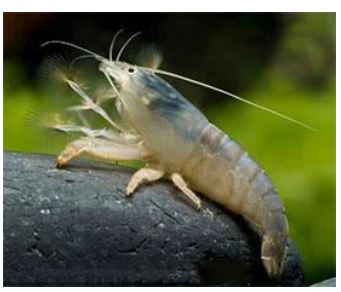Aspects of biology of Atya gabonensis (Giebel, 1875) (Crustacea: Decapoda: Natantia) at the confluence of river Niger and Benue, Ganaja, Kogi State, Nigeria
DOI:
https://doi.org/10.17762/sfs.v9i1.16Keywords:
Gabon prawn, Morphometric features, Allometry, Moulting statistics, Fecundity, Gonadosomatic indexAbstract
Aspects of biology of Gabon prawn, Atya gabonensis (Giebel, 1875) was investigated in the confluence of River Niger and Benue, North-Central Nigeria. A total of 2,175 specimens were collected from January to December, 2017 by fishermen using combination of gears (drag nets, set traps and traditional gear known as “Ahina”) and transported in icebox containing water to the laboratory for further studies. No specimen was found during the peak of the rainy season (July to October). The highest number was collected in February and the lowest number was found in December. Higher mean values were recorded in males for all morphometric features. Negative allometry was observed in females, males and combined sexes with very strong correlation (r=0.95, 0.97 and 0.96, respectively). The mean Condition Factor was 2.29±0.04 in females and 2.42±0.04 in males. The highest percentage of moulting was in February (73.33%) and lowest (8.00%) in June. Males showed superiority in size than females in all the morphometric parameters. Sex ratio revealed higher number of males to female. Mean fecundity was 9,575±515. Mean egg size was 0.46±0.01mm and mean GSI was 0.33±0.01. Egg developmental studies revealed 25% of ovigerous females in stage 1; 12.5% in stage 2; 25% in stage 3; 29.17% in stage 4 and 8.33% in stage 5. Despite the abundance of A. gabonensis at Ganaja, it is yet to be fully exploited by the local fishermen. A. gabonensis is recommended as excellent candidate for aquaculture and Ganaja is recommended for collection of broodstock at the onset of rainy season. All male production of this species is also recommended to be more advantageous than female










